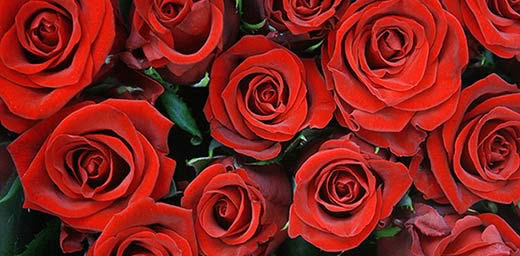|

 Helps produce more abundant, better tasting and more nutritious vegetables.  Especially formulated for the needs of palm, cactus, citrus & succulents. 
 Ideal for a variety of in-ground and container planting. |
 |
Featured Quote: "From December to March, there are for many of us three gardens--the garden outdoors, the garden of pots and bowls in the house, and the garden of the mind's eye." |

|
|
 |
|
 |
|
 |
|
• The first commercial Christmas cards were commissioned in London, in 1843, by Sir Henry Cole, with illustration by John Callcott Horsley. President Dwight D. Eisenhower issued the first official White House card in 1953. • "Rudolph" was actually created by Robert May for Montgomery Ward in the late 1930's as a holiday promotion. The song was written later by Johnny Marks, and recorded by Gene Autry in 1949; it promptly sold about 2 million copies. • Christmas became an official national holiday in the USA on June 28, 1870. • Poinsettias are the most popular Christmas plant and are the number one "flowering" potted plant in the United States.  • Franklin Pierce put the first Christmas tree in the White House (in 1856), for a group of Washington Sunday School children. Benjamin Harrison is credited with starting the tradition of the White House tree, being the first to have a decorated family Christmas tree in the White House in 1889, and Calvin Coolidge put the first National Christmas Tree on the White House lawn (not in the White House) in 1923. • The first reported electrically lit Christmas tree was in December, 1882. The world's first practical light bulb was invented by Thomas Edison in 1879, and a mere three years later, in 1882, an officer of Edison's electric company, one Edward Johnson, electrically lit a Christmas tree for the first time. In 1917, after a tragic fire in New York City that was caused by Christmas candles, Albert Sadacca (fifteen years old at the time) invented safety lights for Christmas trees. Decorating a live Christmas tree outdoors became popular, and eventually moved to indoor trees. The outdoor lights also moved onto houses, and decorating houses in lights became (and has remained) popular. • Christmas trees are grown in all 50 states, including Hawaii and Alaska. • In 1979, the National Christmas Tree was not lighted except for the top ornament. This was done because of the American hostages in Iran. • According to the Guinness World Records, the world's tallest cut Christmas tree was a 221' Douglas fir (Pseudotsuga menziesii) erected and decorated at Northgate Shopping Center, Seattle, Washington, USA, in December 1950. |
 |
|
Not all plants are created equal in the eyes of children. Although they don't differentiate when it comes to flowers and vegetables or annuals and perennials, kids have their hands-down favorites. They prefer huge flowers like marigolds, petunias, and sunflowers and small vegetables like cherry tomatoes, dwarf carrots, and radishes. They love unique color shades, too, so make sure to include flowers with multi-colorings such as pansy, snapdragon and striped impatiens, and vegetables such as purple carrots, and 'Easter Egg' radishes, along with striped beets and tomatoes. Textured plants are irresistible. If your conditions are right for them, include the fuzzy woolly thyme and lamb's ears, the prickly coneflower and strawflowers (for sunny locations) and donkey tail fern, maidenhair fern and columbine (for shadier spots). Fragrant plants transport the imagination. If you grow them now, your child will always remember the scents of gardenia, heliotrope, roses, peonies, and lilacs. If you show them which plants to rub between their fingers, they'll never forget lavender, chocolate and pineapple mint, lemon balm, rosemary, basil, and scented geraniums. Butterflies fascinate children, and there are many colorful plants that that will attract them. Consider including butterfly bush, lantana, monarda, salvia, sweet peas, and veronica--but don't overlook carrots, dill, fennel, and parsley to round out their diet. Positively pickable plants also get the thumbs-up from kids. While mom's landscape may be off-limits for bouquet gathering, children should have free rein over certain cutting gardens. Cosmos, snapdragon, salvia, zinnia, coleus, and celosia are just a few that will produce more blooms if frequently picked. Don't overlook spring- and summer-flowering bulbs that hold the promise and surprise of things to come. Use the same rules as above when selecting colors and varieties. Gardening can truly be a fun experience for children. So start planning their garden today. You'll be getting started on creating memories that will last a lifetime. |
 |
|
By Tamara Galbraith Soon after the festivities end, your once-fresh Christmas tree begins moving from Christmassy to crispy. No matter. When you're ready to take down the decorations, explore all your options of how to reuse or recycle. Many communities across the country offer a recycling program, whereby trees are collected and ground up into mulch for municipal use. Areas with lots of man-made lakes sometimes collect and sink old trees into waterways to slow erosion. Check with your local city government or county Extension Office to see if such a tree collection program is in place. Also, if you have the space and don't mind "the natural look" in your landscape, lay your old tree in a remote corner of your yard; it will make a great hiding and nesting place for birds, rabbits and other small creatures. If you have a compost pile, you can cut the branches into small pieces, and add them to the compost pile. It will take time, but they will break down to beautiful soil. Whatever you choose, be sure all the non-natural decorations, like tinsel and ornament hooks, have been removed. While sparkly mulch might have an interesting look, it's not very good for the environment. |

|
Fun for the family from Norad! Click Here to receive updates from the North Pole and play games. New content daily. Track Santa's progress toward your house this Christmas Eve! |
 |
|
How can I get my poinsettias to re-bloom next year? Answer:
|
 |
|
Makes a unique--and delicious--centerpiece for the table!
What You'll Need:
Step by Step:
|
 |
Written content © Garden Partners LLC, or respective authors. All Rights Reserved. Privacy Policy. All written content contained in this site is protected by United States copyright law and may not be reproduced, distributed, transmitted, displayed, published, or broadcast without prior written permission of Garden Partners, LLC. You may not alter or remove any trademark, copyright or other notice from copies of the content. |



